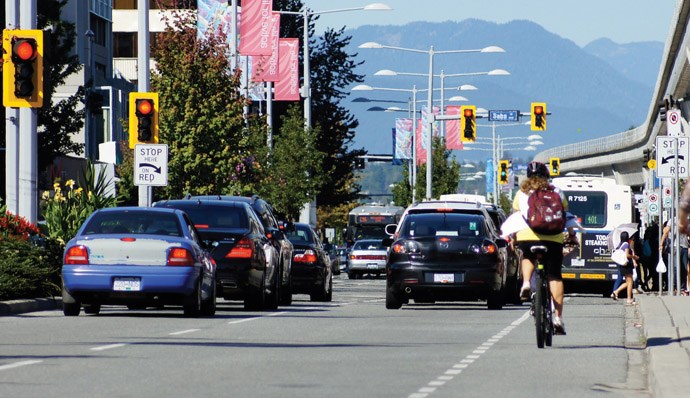Six cyclists are injured every day in the summer in B.C. and, in the Lower Mainland, on average, 1,100 cyclists are injured every year.
Because of the growing number of cyclists on the road and the warmer weather beginning to kick in, ICBC is urging drivers and cyclists to take extra care on our roads with Bike to Work Week beginning Monday, May 28.
According to ICBC, in B.C., 760 cyclists are injured and seven are killed in car crashes from June to September every year.
"More crashes mean more deaths, injuries and claims, which is why we need to work together to make roads safer," said Lindsay Matthews, ICBC's acting vice-president responsible for road safety.
"We sponsor Bike to Work Week as an opportunity to educate both drivers and cyclists.
“It's part of our commitment to support road safety programs throughout the province. Whether you're a driver or a cyclist, please do your part to drive smart."
On Vancouver Island, on average, 320 cyclists are injured and three killed every year.
In the Southern Interior, on average, 160 cyclists are injured and three killed every year.
In the North Central region, on average, 22 cyclists are injured from every year.
Tips for drivers:
As a driver, you see cyclists when you really look for them. Stay alert, especially at intersections, and be ready to yield the right-of-way.
Watch for cyclists on the road and make eye contact if you can, so they can anticipate your next move.
Shoulder check for cyclists before turning right and watch for oncoming cyclists before turning left. Scan for cyclists before you enter the roadway from an alley or get in and out of a parking spot.
Both drivers and passengers must shoulder check for cyclists before opening their vehicle door. Not only will it keep cyclists safe, it will help you avoid a dooring violation and fine too.
Maintain at least three seconds of following distance behind cyclists and at least one metre when passing a cyclist. Don't risk side-swiping or running a cyclist off the road.
Tips for cyclists:
Obey all traffic signs and signals and follow the rules of the road.
Use designated bike routes whenever possible – they're safer and reduce conflicts with vehicle traffic. Check your local municipality's website for designated bike routes or visit TransLink.ca for maps of cycling routes in Metro Vancouver.
If there's no bike lane, keep to the right-hand side of the road as much as it's safe to do so. It's illegal to ride on most sidewalks and crosswalks – it puts pedestrians in danger and drivers don't expect cyclists to enter the roadway from a sidewalk.
Use caution around parked vehicles. Be aware of people in vehicles and taxis to avoid getting hit by an opening door. It's best to keep at least one metre away from parked vehicles.
Before making any turns, shoulder check and hand signal in advance. Remember, drivers sometimes fail to yield right-of-way.
For more information about cycling, and videos about these tips, visit ICBC.com.



